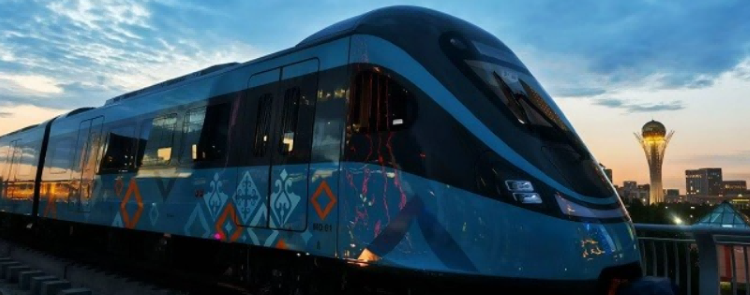The article is provided by our media partner 7ITSNEWS.
Huawei and Kazakhstan are pressing the accelerator on driverless light rail technology, integrating passenger, logistics, business, and information flows into a single ecosystem that fuels sustainable development. Central Asia’s first driverless light rail is now underway, redefining smart urban mobility and connecting citizens across Astana.
Two thousand years ago, Central Asia linked the Eurasian continent through the Silk Road. Today, that legacy continues through digital innovation: smart rails now carry passengers and data instead of caravans, uniting commerce and connectivity.
Why Kazakhstan is investing in smart transportation
Kazakhstan’s transport digitalisation is both a national priority and a regional necessity. Strategically located between China, Russia, Europe, and the Middle East, the country serves as a natural logistics hub. Domestically, Astana’s population is projected to exceed 1.7 million within five years — a rapid urbanisation that demands sustainable urban transport solutions.
Under its vision of becoming the digital hub of Central Asia, Kazakhstan aims to raise public transit usage from 41% to 71% by 2030. This transformation reflects a clear shift toward efficiency, sustainability, and integrated data-driven infrastructure.
International collaboration drives the future of urban mobility
The Astana Light Rail Project stands as a flagship example of international infrastructure cooperation. The contractor, China Railway Eurasia Construction Investment Co., Ltd., combined global engineering expertise with advanced digital systems to create a modern model of smart city transport.
Scheduled to begin operation by the end of 2025, the light rail will provide faster, safer, greener, and more efficient travel for Kazakhstan’s citizens — establishing a new benchmark for urban mobility innovation across Central Asia.
LTE-M solution: the backbone of digital rail
This 22.4-kilometre driverless light rail line, featuring 18 stations, embodies Kazakhstan’s push for a fully digital transportation network. Partnering with Huawei, the project leverages industry-leading LTE-M technology to ensure seamless, secure, and intelligent train operations.
Reliable connctivity and signal stability
Huawei provides wireless base stations, network cores, and handheld terminals that ensure comprehensive coverage for mainlines, depots, and tunnels. The dedicated LTE-M 1.8 GHz band prevents public network interference, guarantees real-time communication between trains and ground systems, and reduces long-term maintenance costs.
Automation and operational efficiency
Through higher-grade automated scheduling, Huawei’s LTE-M system reduces headways and enhances operational capacity. Integrated office automation and public Wi-Fi across 18 stations further streamline management and boost employee productivity.
Enhanced passenger experience
The LTE-M network ensures full coverage in trains, tunnels, and stations, supporting mobile work, entertainment, and connectivity. Real-time Passenger Information Systems (PIS) provide accurate updates and improve travel comfort and convenience.

A future-ready and scalable mobility platform
The Huawei solution is designed with scalability at its core. As passenger volumes grow, the network can easily add new trains and services, supporting the evolution of AI-driven mobility solutions without major infrastructure upgrades. This adaptability makes it a true future of smart urban mobility model.
Currently, Astana continues to refine its rail transformation using Huawei’s digital platform as a foundation. The project strengthens train-ground communications and ensures stability, reliability, and flexibility for future technologies.
Central Asia’s path toward a smarter urban future
With the integration of AI, IoT, and real-time analytics, Kazakhstan’s driverless light rail system marks a defining moment for sustainable urban mobility. The initiative aligns with the country’s broader vision of becoming the digital hub of Central Asia, combining innovation, efficiency, and environmental responsibility.
As the future of smart city mobility unfolds, Astana’s digital light rail will not only transform daily commuting but also serve as a blueprint for other cities across the region — proving that the journey toward a connected, intelligent urban future has already begun.
Read more about sustainable and smart transportation here, here and here


